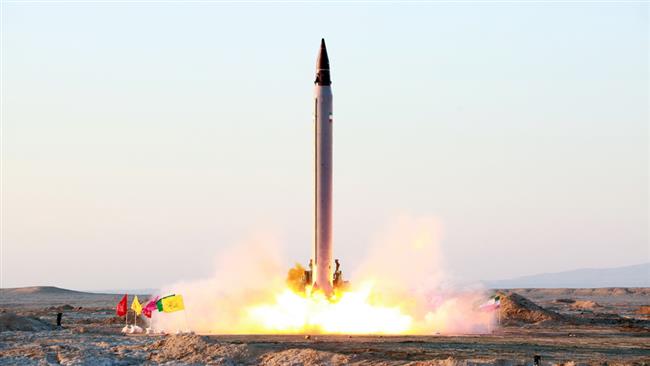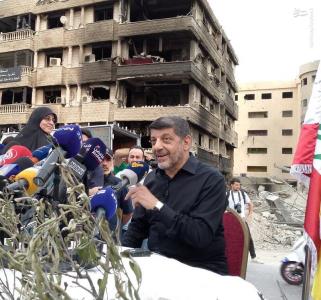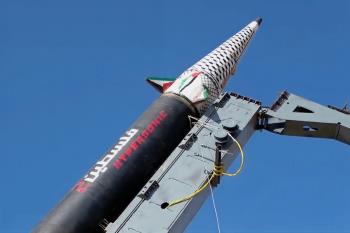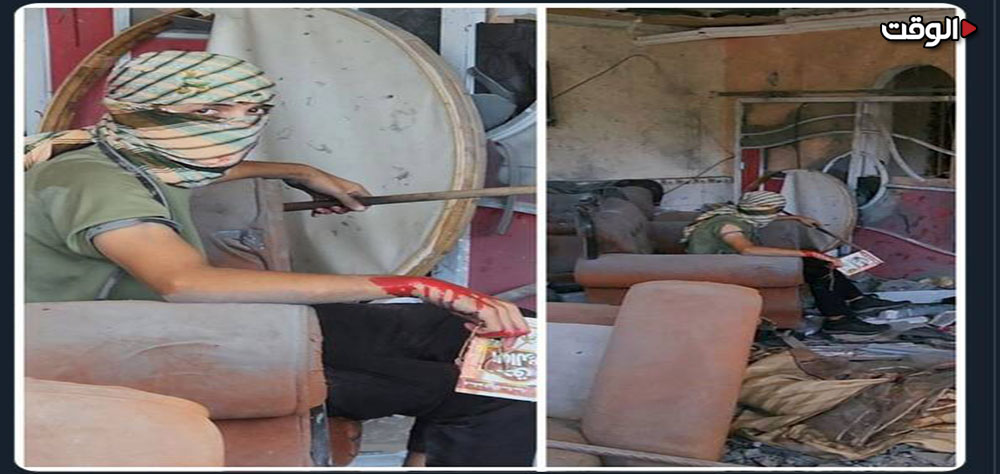Alwaght-Iran’s successful launch of ballistic missiles targeting ISIS terrorist group positions inside Syria has confirmed the country’s position as one of the major missile powers in the world.
Chief of Staff of the Iranian Armed Forces Major General Mohammad Baqeri highlighted the country’s missile power and said the hegemonic powers cannot confront the Islamic Republic.
Speaking at a gathering of technology activists in Tehran on Monday, Major General Baqeri highlighted the weakness of domineering powers in the face of the Islamic Republic and said they are not capable of confronting the country.
He further said that Iran is in permanent competition with domineering powers in various areas, including the missile field.
“Thanks to the blood of martyrs and efforts made by domestic scientists, we are now one of the world’s biggest powers in the field of missiles,” he said.
The remarks came after the Islamic Revolution Guards Corps (IRGC) targeted ISIS terrorists’ positions in Syria’s Deir Ezzor on Sunday night.
In an operation codenamed “Laylat al-Qadr”, the IRGC fired six mid-range ballistic missiles at various targets within a range of 650 to 700 kilometers, including the headquarters, ammunition and logistic depots of the terrorists.
Head of the IRGC Public Relations Department General Ramezan Sharif The strong missiles successfully hit the targets with pinpoint accuracy, adding that the headquarters, ammunition and logistic depots of the terrorists were among the targets in the operation. He added that the attack was "only a fraction of Iran's punitive power against terrorists and other enemies." Amir Ali Hajizadeh, commander of the IRGC's Aerospace Force said reconnaissance drones transmitted to Iran online footages of the missile attack against the ISIS in Deir Ezzor.
Online footage of attack
"The missiles were fired from Iran and they passed through Iraq's airspace and hit Syria and the online footages of the strikes in Deir Ezzur were sent to us in Iran by the drones which were flying over Syria," General Hajizadeh said on Monday.
"It is a message. The enemies should be vigilant, (and understand that) we responded the Takfiri terrorists' fireworks (the June 7 terrorist attacks in Tehran) with missiles," General Hajizadeh underlined.
Meanwhile, Brigadier General Ahmad Reza Pourdastan the Deputy Commander-in-Chief of Iranian Armed Forces has said the missile strike the IRGC launched against ISIS terrorists in Syria delivered a warning to the troublemakers seeking to trigger tensions.
He further noted that, the “limited missile raid” by the Islamic Revolution Guards Corps against terrorist positions in Syria’s eastern region of Deir Ezzor unveiled part of the Iranian Armed Forces’ assault and deterrent capabilities.
The operation comes just days after the U.S. Senate passed the Countering Iran's Destabilizing Activities Act by an overwhelming margin, a new sanctions legislation which targets Iran’s ballistic missile program and applies sanctions against the IRGC.
The attack also sends a clear warning signal to Saudi Arabia which has been trying for some time to test Iran’s patience.
“Saudi Arabia and other countries supporting terrorism should know that the Islamic Republic jokes with no one,” senior MP Alaedin Boroujerdi said on Monday.

Zolfaqar missile
According to military sources, Zolfaqar missile was used in the assault on ISIS positions in Syria. Zolfaqar is a solid-fueled medium-range ballistic missile (SRBM) that can reach 700 to 750 kilometers and is accurate within 5 to 10 meters. It is Iran’s latest variant of the Fateh-110 missile series — a family of solid-fueled SRBMs that Tehran has refined since the 1990s.
The missile uses a multiple reentry vehicle payload, featuring a cluster warhead that can shower an area with sub-munitions.
Other features include the missile's radar-evading and anti-jamming properties and operation with mobile and self-propelled light tactical launcher. Iran has many other missiles in its massive arsenal including a locally produced long-range Emad ballistic missile that was successfully test fired in October 2015.

In January 2016, IRGC unveiled a deep underground tunnel filled with numerous Emad ballistic missiles while last month IRGC also announced completing its third underground missile production facility. Iran has vowed to strengthen its defensive missile might in the face of security threats facing the nation.
Iran reiterates that despite certain restrictions stipulated in the UN Security Council Resolution 2231 under the terms of a July 2015 nuclear agreement between Iran and six world powers the country will keep boosting its defense capabilities, especially its missile power.



























